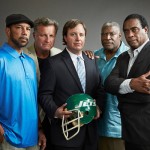To be a pioneer means to be the first to recognize a problem or situation and work to develop a solution. Often mocked and misunderstood, pioneers face an uphill battle to prove the worth of what they’re trying to accomplish.
At Goldberg, Persky & White, we pride ourselves on being pioneers in the field of asbestos litigation. For more than 30 years, we’ve been on a journey toward compensating those injured by asbestos. Before companies admitted responsibility and awareness of the dangers, we were fighting for working men and women.
This spirit is something we admire in Jason Luckasevic, a shareholder at GPW.
Almost a decade ago, Jason learned about the connection between the NFL and chronic traumatic encephalopathy (CTE) from family friend and forensic pathologist Bennet Omalu and began working on a case shortly after. In 2011, he became the first attorney to file against the NFL, accusing the League of hiding the dangerous effects associated with playing.
In the years since, the lawsuit gained momentum and was joined by attorneys around the United States. This groundbreaking case changed the game and made people realize the long-term effects of repeated concussions. Football teams, from youth leagues to college to professional levels, are finally paying attention to research and making changes.
Now as the fairness hearing approaches for the NFL concussion settlement, many are recognizing Jason and his clients for their persistence. He’s no stranger to media interviews and publicity associated with the settlement.
Recently, Jason was recognized in a New York Times Magazine cover story for his fight: “How One Lawyer’s Crusade Could Change Football.”
“The New York Times article was very powerful and an accurate recounting of the events; however, there is so much more to share. Be sure to stay tuned,” Jason added mysteriously.
While the settlement isn’t perfect, Jason recognizes the strides made to help the players and the groundbreaking nature of the lawsuit.
“This case may go down in history as one of the most famous civil litigations of all time because it involves professional athletes and the most famous sport in America,” Jason said. “I am proud to go down in history as the lawyer who started it all. I feel personally vindicated because there were many doubters.”
From this experience to his involvement on the Brain Injury Awareness Association of Pennsylvania board, Jason credits the most satisfying feeling as “saving lives due to the awareness regarding brain injury and concussion.”
Since the article published online last Thursday, hundreds of Twitter users have embraced and shared the story by Michael Sokolove. Many added personal comments, reflecting on the amazing tale and applauding Jason for his perseverance and the difference he’s making.
To stay up to date with Jason, follow him on Twitter at @JasonLuckasevic or visit our sports brain injury website.
[This post originally appeared on Goldberg, Persky & White’s website, www.gpwlaw.com]
